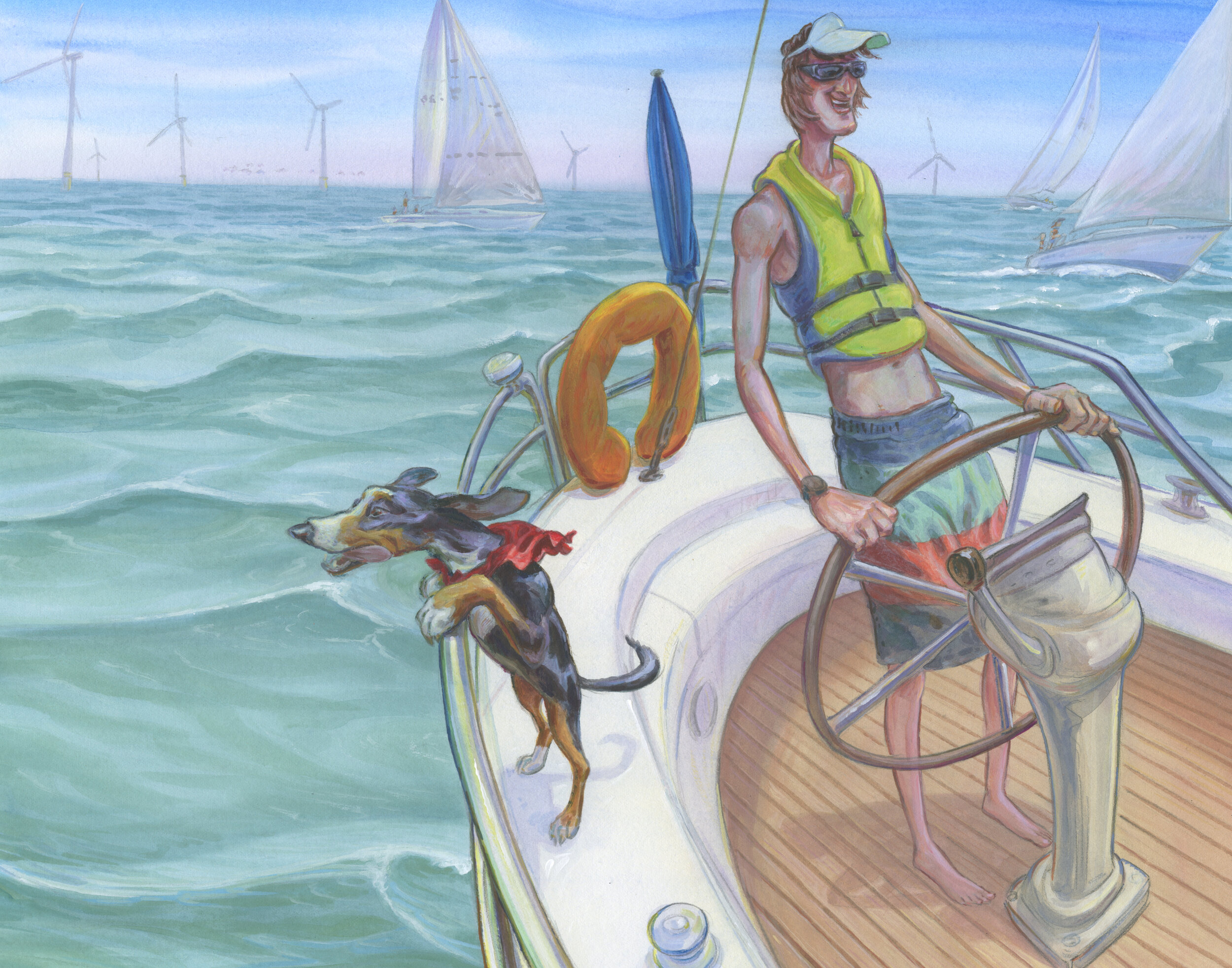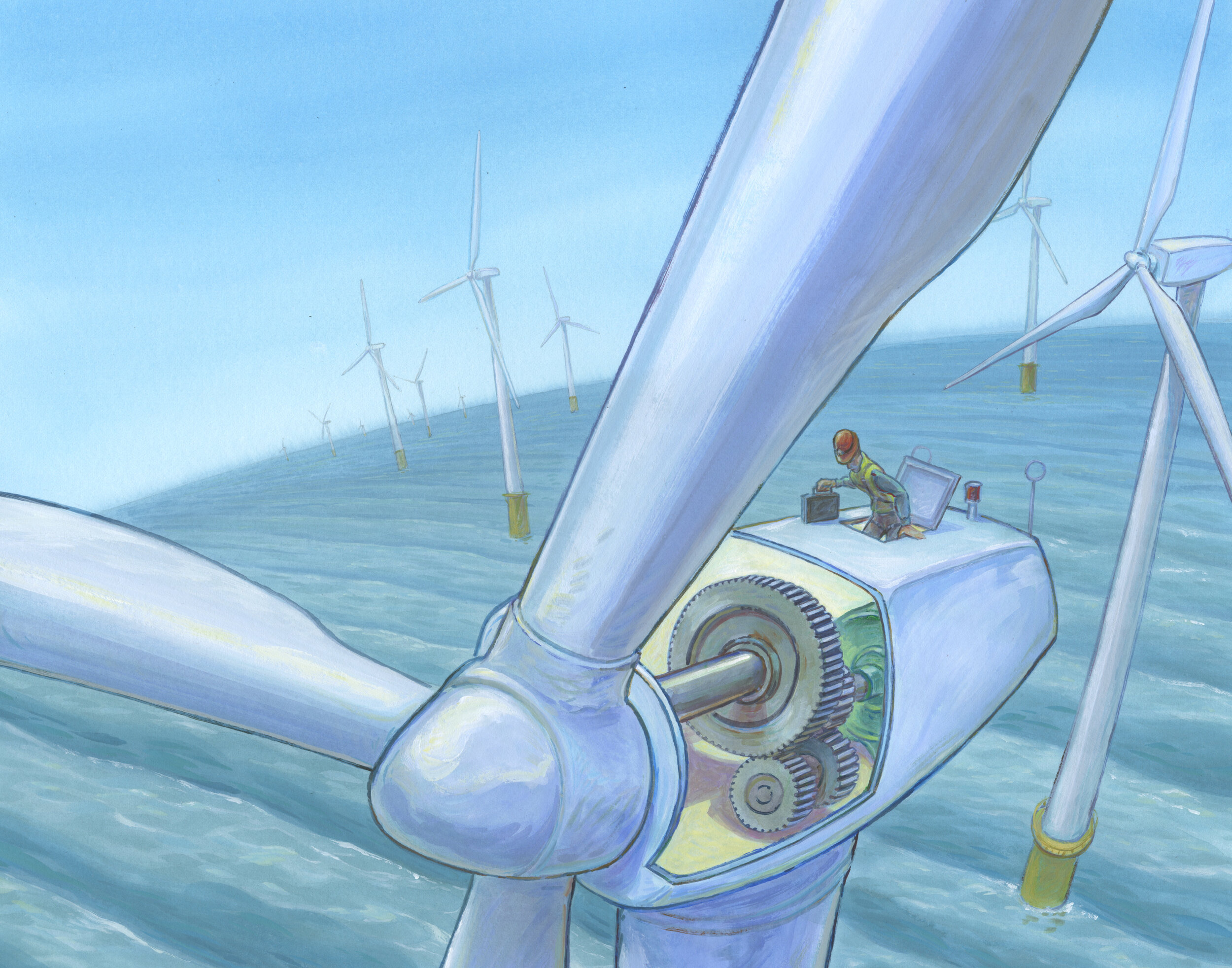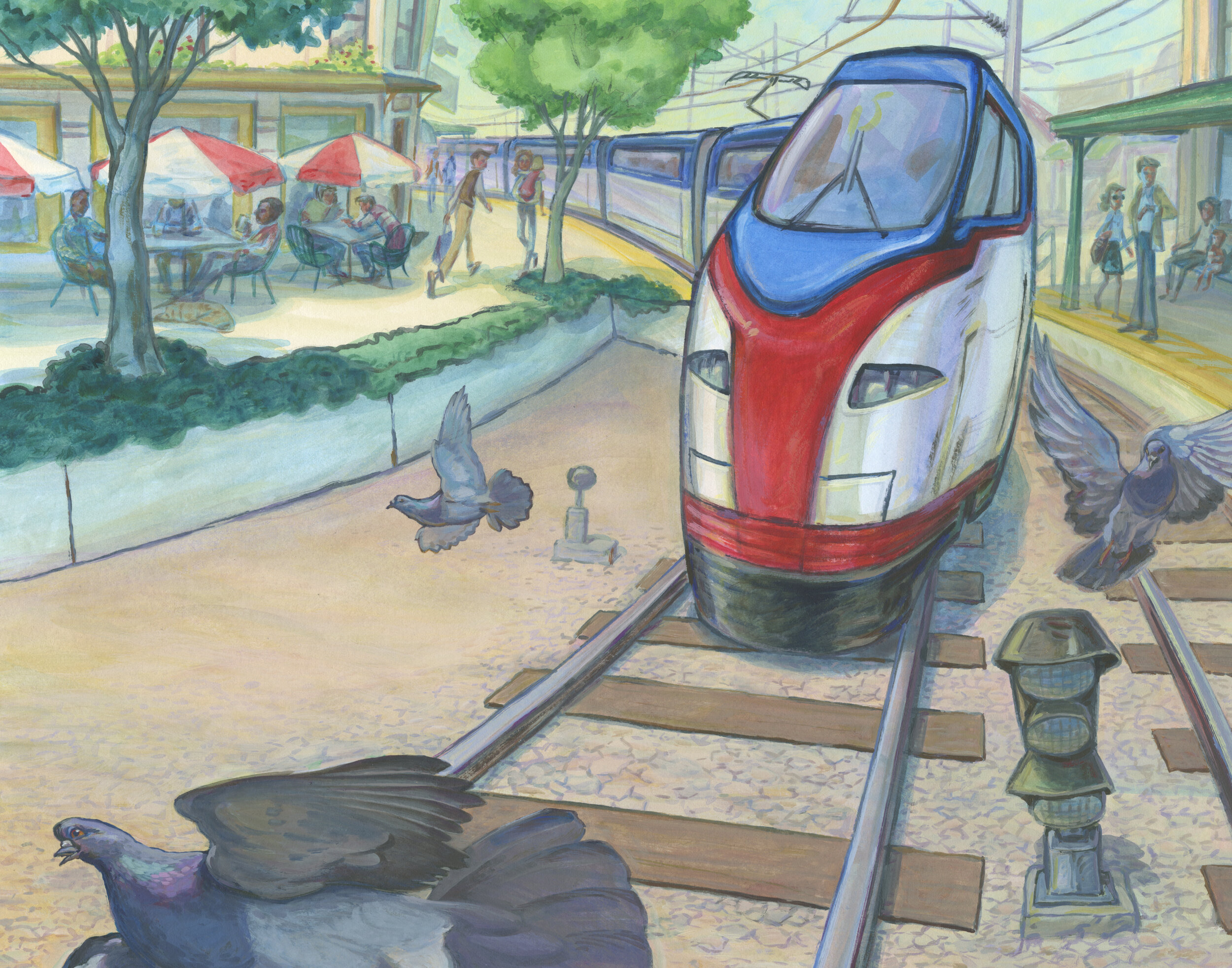When the Wind Blows
When the wind blows
Porch doors sway
Dune grass bends
Sea waves spray.
Much happens when the wind blows. Kites fly, balloons escape, beach balls roll, and wind spins the blades of turbines that power trains, heat houses, and light up cities. A rhythmic, rhyming text appeals to young poets and engineers alike, while acrylic paintings illuminate the story of wind power with clarity and elegance.
School Library Journal- What happens when the wind blows? This picture book demonstrates the significance of wind power. The story begins with a scene depicting summertime on the beach, where children run and play, “balloons escape,” and “balls roll” and then transitions to the ocean, where a sailboat wends its way among powerful wind turbines. A maintenance worker climbs the tall ladder of a turbine, while the simple text explains that “magnetic forces use electrons as energy sources.” The writing may be a bit challenging for some readers, but they’ll learn that windmills power electricity throughout the United States, lighting up and heating homes, allowing trains and smart cars to run, and fueling lighthouses for safety at sea. Attractive watercolors depict the effects of wind power through accessible images that will resonate with readers, such as an image of the United States lit up, as seen from outer space. This clear and fun explanation begs for story time reading and will spark discussion. An enlightening, fresh effort. —Nancy Call, Santa Cruz Public Libraries, Aptos, CA
Booklist- At first glance, this seems like a typical day-at-the-beach tale, where the wind makes a kite soar, tugs balloons from a child’s grasp, and sends a beach ball rolling along the sand. But when it reaches an offshore wind farm, things take a scientific turn. In rhyming four-line stanzas, Clark describes how windmills work (“When the wind blows / Magnetic forces / Use electrons / As energy sources”), converting wind into energy that travels through power lines to activate lights, heat and cool homes, and power electric cars and railroad tracks. With talk of magnets, copper coils, and circuits, this probably won’t be a story time pick, but its simple look at wind energy has great classroom potential that can easily segue into science lessons. Veteran illustrator Sneed splashes bright watercolors over two-page spreads that show the wind’s journey from beach to bedroom lights. Concerned with broad concepts rather than detailed understanding, this offers a breezy introduction to wind energy. —Julia Smith




